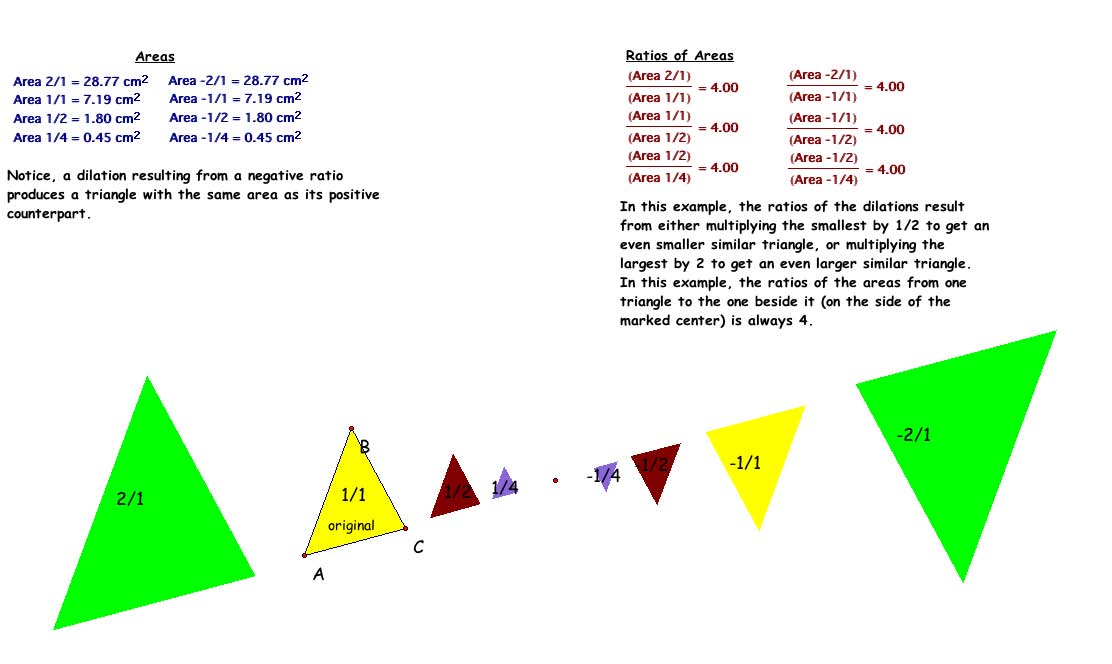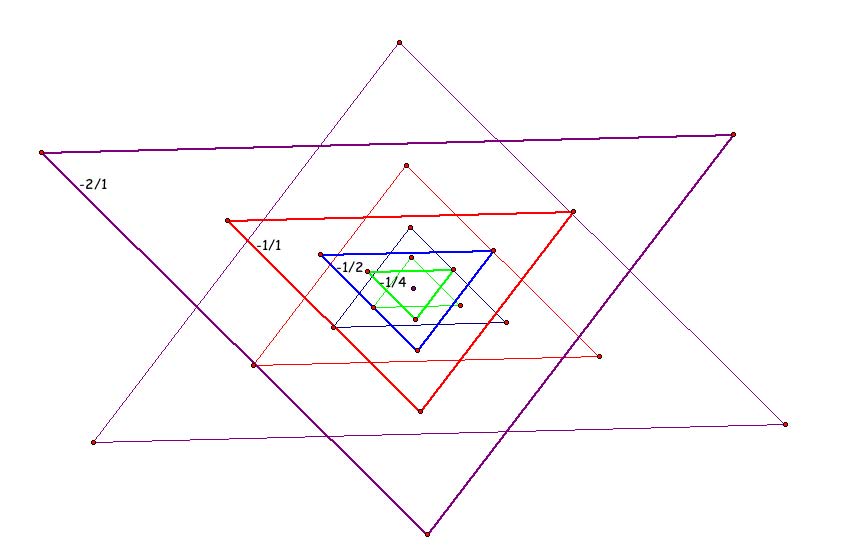Properties of Dilations
Dilation by Marked Center

The ratios of the dilated triangles never change, no matter how you move the marked center or the original triangle.
The ratios of the distances from a vertex on one triangle to the same vertex on the next triangle are the same.
If you dilate the original triangle by a ratio greater than 1, the dilated triangle will be on the other side of the original from the marked center and will be larger than the original.
If you dilate the original triangle by a ratio equal to1, the dilated triangle is identical to the original.
If you dilate the original triangle by a ratio less than 1, the dilated triangle will appear closer to the marked center and will be smaller.
If you dilate the original triangle by a ratio less than zero, the dilated triangle will appear on the opposite side of the marked center point and will be larger or smaller than the original, depending on the ratio size (see above), but it will be of equal area to its positive counterpart.

What happens if we include the negative ratios in our spider web?

It appears that if you dilate the original triangle using negative ratios, it dilates the same size as its positive counterpart, but the dilated triangle is rotated around 180 degrees.